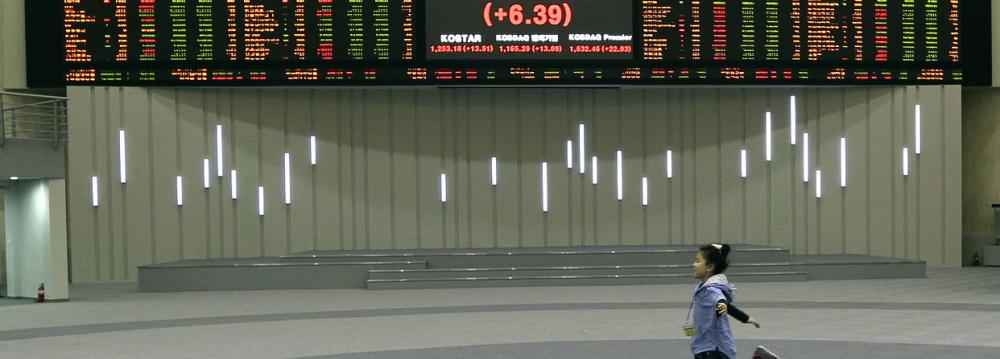Foreign investors will likely pull their money out of the South Korean bond market starting in 2018 as they move to safer assets on an imminent rate hike by the US Federal Reserve, a report said Sunday.
According to the report by the Korea Institute of Finance, the rate difference between South Korean and US three-year Treasurys reached 0.37 percentage point as of September this year, narrowing from about 1 percentage point in 2014 and around 2.5 percentage points in 2012, Yonhap reported.
The narrowed disparity was driven by the Bank of Korea’s low-rate policy, in which the country’s key rate fell steadily to a record low of 1.25%, while the US Fed has kept giving out hints of a rate hike.
As a result, the margin of longer-term bonds reversed this year as interest rates of US bonds are higher than those of South Korea’s.
At the same time, foreign investments on the local bond market decreased by 10.1 trillion won ($8.65 billion) from July last year to September this year.
“A rate increase in the United States may stir up risks of a rise in South Korea’s base rate and won-dollar rate,” the report said. “Foreign investors would sell off their South Korean bonds in advance as they are worried about losses on valuation of their Korean assets.”
The KIF report noted that a foreign outflow will not happen in the near future but can start in earnest in 2018, when the US rate becomes higher than that of South Korea.
Plan to Curb Rising Debt
South Korea’s financial authorities will enhance efforts to curb the growth of household debt to prepare for the possibility that the Federal Reserve might raise interest rates faster than market expectations.
“Long-term bonds’ rates have started to rise globally, a sign that we are carefully watching,” the official told The Korea Herald. “The rising bond rates would affect fiscal soundness of local financial institutions, and ahead of that, the regulator will strengthen efforts to reduce risks at the institutions including the household debt problem.”
Richmond Fed President Jeffrey Lacker made a comment Thursday that the Fed could raise interest rate more quickly, when asked about how the US central bank would react to the incoming Trump administration.
Such bond rate increases will gradually lead to higher rates for various financial products in the market. There are already concerns about the impact of a US rate hike on the debt-ridden household economy, as many commercial banks here moved to raise mortgage interest rates.
Lee Ju-yeol, governor of the Bank of Korea, said Friday, “The rising market rates are leading to increasing burdens on debt-ridden households.”
Higher market rates can cause the country’s massive household debt to turn into a “time bomb” as many pundits warn in Seoul.
As of the second quarter of this year, aggregate household debt stood at about 1,260 trillion won ($1.08 trillion), 126 trillion won higher than a year earlier.
About a quarter of the total debt is saddled with households that are financially vulnerable.
According to data compiled by the Bank of Korea, household loans issued by secondary financial institutions, including non-bank institutions, stood at 274.9 trillion won as of August, jumping around 13% as of June compared to the same period last year.
As the pace of debt growth in the secondary financial sector has accelerated faster than expected, the country’s financial regulator decided to come up with tighter credit screening guidelines for the relevant institutions within the year.
The FSC is planning to implement a new debt service ratio index, known as DSR, across all financial institutions by the end of the year, which will gauge an individual’s aggregate financial capabilities to borrow and repay loans. With the introduction of the index, financial institutions will get access to information regarding a consumer’s total debt with other institutions including credit card firms and estimate a lendable amount.


